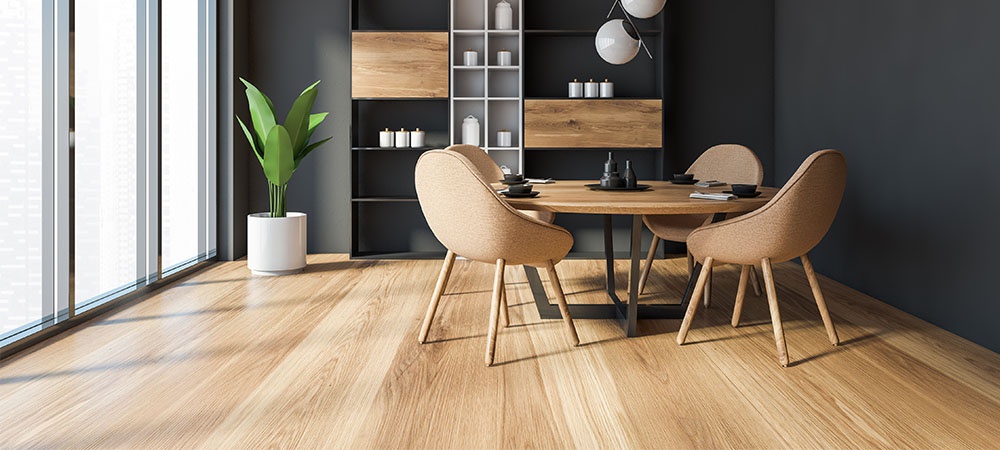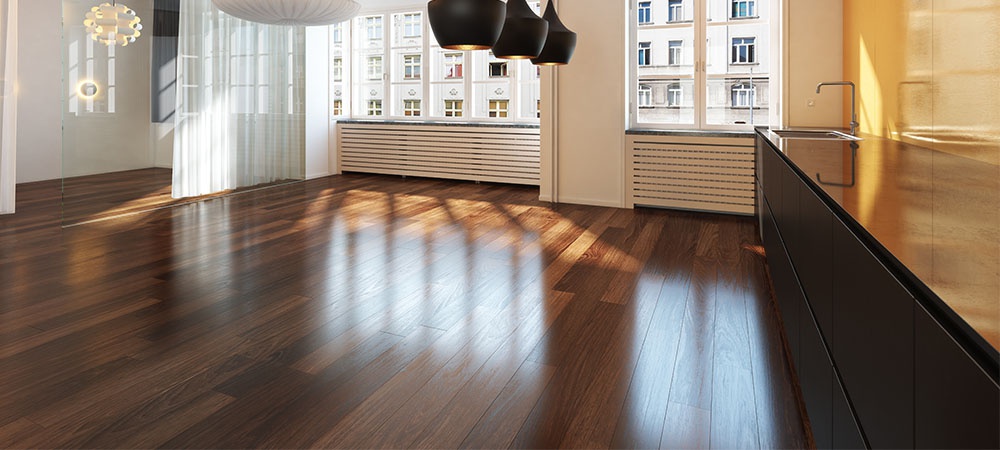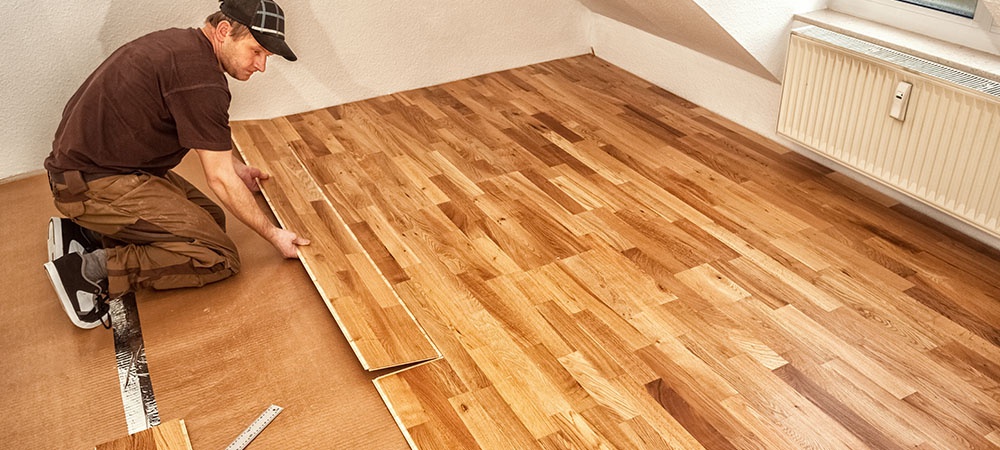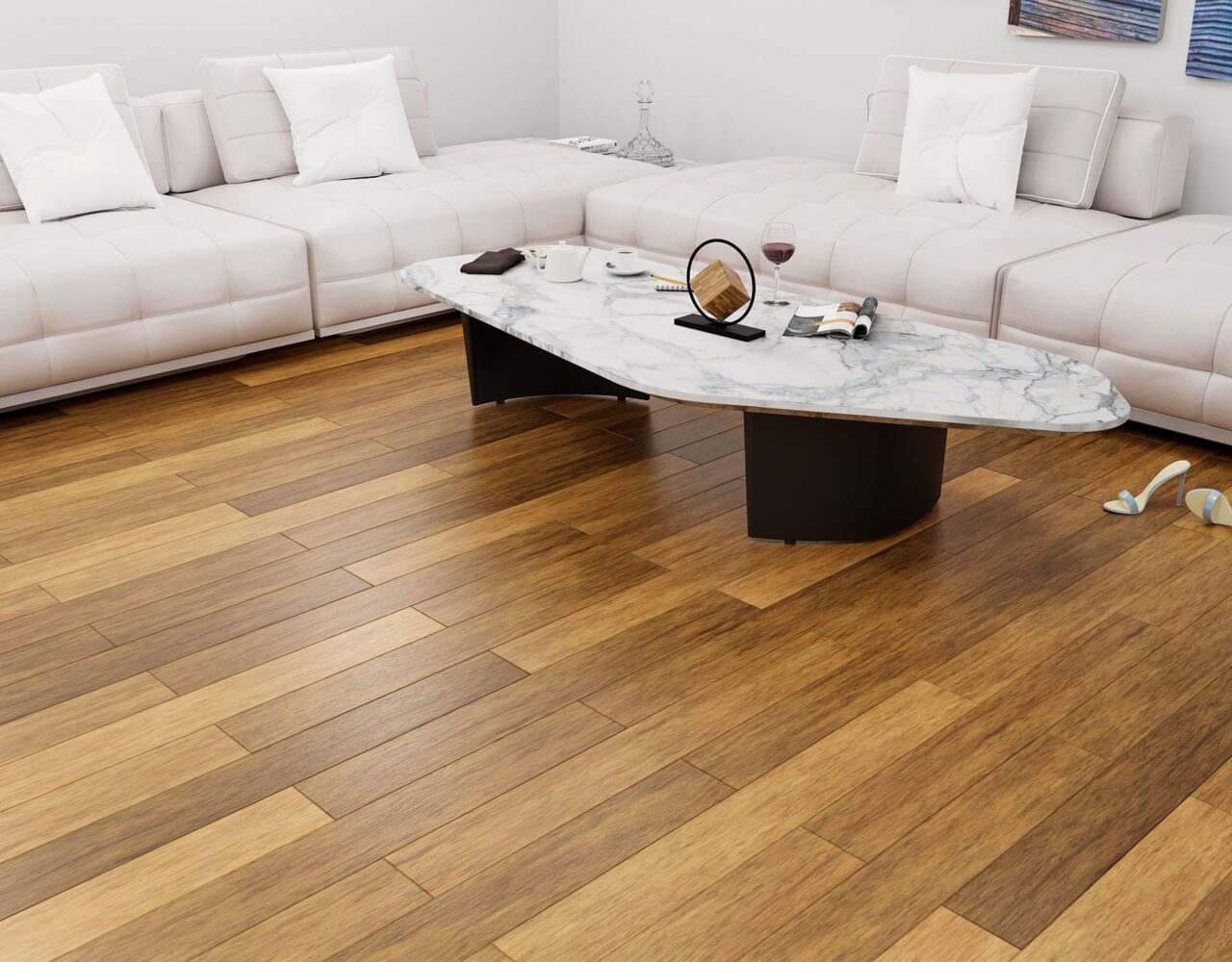Solid and engineered hardwood floorings are the favorite wooden options many homeowners love. They offer homeowners alternatives that meet their varying needs, likes, and preferences. They have beautiful similarities, including appearance. No wonder it’s almost impossible to distinguish the two floorings after their installation.
Despite appearing similar, these two flooring options differ in many ways. This post examines the nine top differences between them. Keep reading to understand and make an informed choice.
What is Solid Hardwood Flooring?
Solid hardwood flooring is a wooden floor made from solid wood planks. These planks are cut directly from tree trunks and converted into flooring planks. This wood is usually 3/4-inch thick and can vary in width from 2 1/2 to 5 inches. Anything beyond this width requires using engineered hardwood.
Most solid hardwood flooring usually comes to installation sites already finished and ready. Site-finished flooring gives you more options like a sheen, stain, and several coats. However, some products come unfinished, making installation easier and less messy.
This flooring option isn’t ideal for floating floors. Also, it isn’t suitable for use in areas prone to high temperatures and water. Therefore, you won’t find this flooring in basements, but you’ll often see them in bedrooms and living rooms.
What is Engineered Hardwood Flooring?
Engineered hardwood flooring is real industrially made hardwood. It has a real hardwood plank covering layers of other wooden materials like plywood. The plywood is glued and laminated in a vertical pattern.
This gluing makes the wood more stable and stronger enough to handle humidity, temperature, and moisture better. Therefore, it’s ideal for use in moisture-prone locations like basements.
Its average thickness varies between 3/8-inch and 1/2-inch. The standard width ranges between 3 1/4-and 5 inches and more. Most of these hardwoods come site-ready, making their installation easier and quicker. Engineered hardwood has more options than solid hardwood because you can easily staple, glue, float, and nail down engineered hardwood of any width.
9 Main Differences Between Solid and Engineered Hardwood
Solid and engineered hardwood flooring differ in many ways. This section examines the top nine differences between these hardwood options.
1. Care and Maintenance
These two flooring alternatives differ in terms of care and maintenance.
- Solid Hardwood
Solid hardwood flooring is easier to maintain and clean. Most solid hardwood floors only require frequent sweeping, vacuuming, and occasional mopping with special cleaners to remove stains. Don’t clean them with steam or water. It is also ideal for long-term maintenance since you can conveniently refinish and sand it down many times during its lifespan.
- Engineered Hardwood
Unlike solid hardwood flooring, many of these floors lack sufficient thickness for long-term sanding and refinishing. Mostly, you can only sand and refinish them once or twice during their lifetime.
Which is the Better Option?
The two flooring alternatives are relatively easy to maintain. They only require simple sweeping and cleaning using recommended cleaners. So, they tie on this front.

2. Cost
Cost is another area where these hardwood floors differ.
- Solid Hardwood
Solid hardwood flooring is more expensive than its engineered counterpart. An average prefinished hardwood flooring can cost $8 per square foot.
- Engineered Hardwood
An engineered hardwood flooring is the cheaper option. Averagely, this flooring costs between
$2.50 and $10 per square foot.
Which is the Better Option?
Overall, engineered hardwood floors are the better option for homeowners with a tight budget. Their labor installation cost is almost the same, ranging between $3 and $10 per square foot. However, the actual cost varies based on your locality’s prevailing labor costs and your rooms’ complexity.
3. Durability
These two flooring options also differ based on durability. Here are their differences.
- Solid Hardwood
Solid hardwood flooring significantly outlasts its engineered counterpart. It can last between 30 and 100 years.
- Engineered Hardwood
Engineered hardwoods don’t last that long. With proper maintenance, they can last between 20 and 40 years.
Which is the Better Option?
Choosing solid hardwood for durability is smarter if you value generational continuity. This hardwood alternative can withstand many times of sanding and refinishing during its lifetime. Conversely, engineered products don’t score well here. They last a shorter time, especially if you sand and refinish them over two times.
4. Ease of Installation
Ease of installation is another way these two flooring products differ. Let’s look at their installation differences.
- Solid Hardwood
Most hardwood floors can be nailed to subfloors, usually plywood. You can also join them using tongue-and-groove planks. The nails don’t show after completing the floor.
- Engineered Hardwood
You can nail a few engineered hardwood floors to sub-floors using the click-and-lock system. After installation, the system floats over subfloors.
Which is the Better Option?
Engineered hardwood floors outperform their natural solid counterparts on this front. Most DIYers find this floor’s installation easier to work with than solid hardwood flooring.
5. Resale Value
These two hardwood floors also differ in their resale value. Here is how they differ on this front.
- Solid Hardwood
When considering long-term resale value, you have no doubt that solid hardwood stands out head and shoulder taller than engineered hardwood. Why? Because it lasts longer than its industrial counterpart. Averagely, flooring your house with solid hardwood boosts your home’s sale price by much as 2.5%.
- Engineered Hardwood
Engineered hardwood flooring is still as attractive to prospective home buyers as its solid counterpart. However, its value addition to a home isn’t as high as that of solid hardwood.
Which is the Better Option?
While adding engineered hardwood flooring to your home increases its resale value, solid hardwood flooring fetches you more value.

6. Dimensions
The two hardwood flooring alternatives differ in their sizes. Below are their size differences.
- Solid Hardwood
The average solid hardwood flooring plank is 3/4 inch thick, 2 1/4 inches wide, and varies in length between 12 and 84 inches. Solid wood has other thicknesses and widths. However, its width never exceeds 5 inches.
- Engineered Hardwood
An average engineered wood flooring plank is usually thinner than its solid hardwood counterpart. It typically measures 3/8 to 9/16 inches thick. However, it’s wider than solid hardwood, reaching up to seven inches, and can measure between 12 and 60 inches long.
Which is the Better Option?
These flooring products tie on this front since no winner exists. Choosing one over the other purely depends on your need or preference for narrower or wider boards. Those preferring narrower boards settle for solid hardwood, while wider board lovers prefer engineered boards.
7. Styles and Species
These wooden flooring products also differ in their styles and species. Let’s look at how they do.
- Solid Hardwood
Solid hardwood is available in various species, such as oak, maple, and hickory. These species are the hardest and most resistant to wear and tear. Solid hardwood has varying widths of up to 5 inches and comes in many colors and textures. It’s up to you to discover many ways this product can fit your styling needs and preferences.
- Engineered Hardwood
Engineered hardwood has many of the design options solid hardwood has. Additionally, engineered hardwood flooring has unique design features like specialty textures, special surface treatments, color effects, and extra-wide planks.
Which is the Better Option?
The two flooring products tie on this front since your personal design and styling preferences inform your decision.
8. Construction
Construction is another way these two flooring products differ. Here is how they do it.
- Solid Hardwood
Traditionally, many homeowners consider solid hardwood flooring the “gold standard.” Solid hardwood planks come from 100% wood, making them more durable, timeless, and authentic.
- Engineered Hardwood
Inversely, engineered hardwood comprises layers with 100% natural wood on top. It also has hardwood at its bottom and a stable core in between. Its core includes 5 to 7 plywood layers compressed together in a criss-crossed pattern. This composition makes it less vulnerable to expansion, shifting, and contracting when exposed to changing humidity, moisture, and temperature changes.
Which is the Better Option?
The two products tie in this area since their construction suits varying uses.
9. Installation Location
Lastly, solid and engineered hardwood products differ based on their installation location.
- Solid Hardwood
Solid hardwood flooring is best for use in above-ground and high-traffic spaces. You can use them in bedrooms, living and dining areas, and kitchens. However, their vulnerability to high humidity and temperature levels makes them unsuitable for use in bathrooms and laundry rooms.
- Engineered Hardwood
Engineered hardwood flooring is suitable for any room in the house. You can use it in high-humidity and temperature spaces like basements.
Which is the Better Option?
We have no loser or winner here because their suitability depends on where you want to use them.

Let’s Help You Floor Your House Today
There you go with all you need to know about how solid and engineered hardwood floorings differ. Which product do you want to install in your home this year? Don’t hesitate to talk to us about all your flooring needs. Call us today for a free estimate and consultation to kick-start your flooring project.

